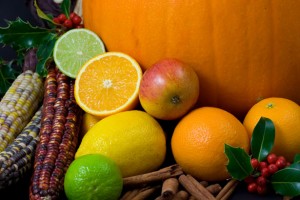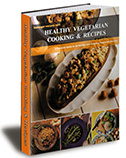
Note: This is the first part introduction of a multiple-posts about getting and preparing the best food.
A nineteenth-century housewife would find the modern supermarket truly overwhelming. Not only is there an endless smorgasbord of canned, boxed, bagged, frozen, and convenience foods, dairy products, fresh produce, meats, and breads, but today what the shopper sees is not always what the shopper gets. Inside a can with a label showing colorful, perfectly cut, crisp-looking green beans may be some pitiful, gray-green, limp specimens. A bag of green beans in the frozen-food section may be more nutritious than canned beans but may still lack some nutrients found in the fresh variety.
Choosing the most nourishing forms of the best food is only the first step toward good nutrition. Once the shopping has been done and the food is in the house, proper storage methods are necessary to retain vitamins and minerals and prevent the possible spread of harmful bacteria. Then, practical preparation and cooking methods are needed to keep food appetizing and wholesome.
Most American consumers buy food in one of the major supermarkets, which in the past 50 years have spread throughout the country, replacing the old-time general and specialty stores. Today’s supermarkets stock more than 10,000 different items, which can make grocery shopping a confusing task.
Choosing the best food requires knowledge, practice, and some luck. As shoppers examine mounds of green beans, piles of peaches, or stacks of tomatoes, they may search for color, firmness, size, or ripeness. As they compare one package of chicken breasts to another, they may look for color or meatiness. As they scan loaves of bread, they may test for softness, type of grain, texture, or size of the slices. Other shoppers maybe more interested in the price, quantity, and the number of additives in a product.
In general, it is best to shop the periphery of the grocery store. This is where fresh fruits and vegetables; fresh meat, poultry, and seafood; dairy products; and freshly baked breads usually are located, because of the need for refrigeration and frequent turnover. The market’s rim, therefore, contains the foods with the least processing, the fewest additives, and often the most vitamins, minerals, and food value.
For new ideas on cooking delicious and healthy food, visit lowsugar-recipes.com.

[…] Original post by Low Sugar | Diabetic Cooking […]
[…] Low Sugar | Diabetic Cooking added an interesting post on Tips on Finding and Preparing the Best Food (part 1)Here’s a small excerptNote: This is the first part introduction of a multiple-posts about getting and preparing the best food. A nineteenth-century housewife would find the modern supermarket truly overwhelming. Not only is there an endless smorgasbord of canned, boxed, bagged, frozen, and convenience foods, dairy products, fresh produce, meats, and breads, but today what the shopper sees is not always what the shopper gets. Inside a can with a label showing colorful, perfectly cut, crisp-looking green beans may b […]
[…] about getting and preparing the best food. Please read the earlier posts to get more information. Tips on Finding and Preparing the Best Food (part 1) Tips on Finding and Preparing the Best Food – Vegetables (part 2) Tips on Finding and Preparing the […]